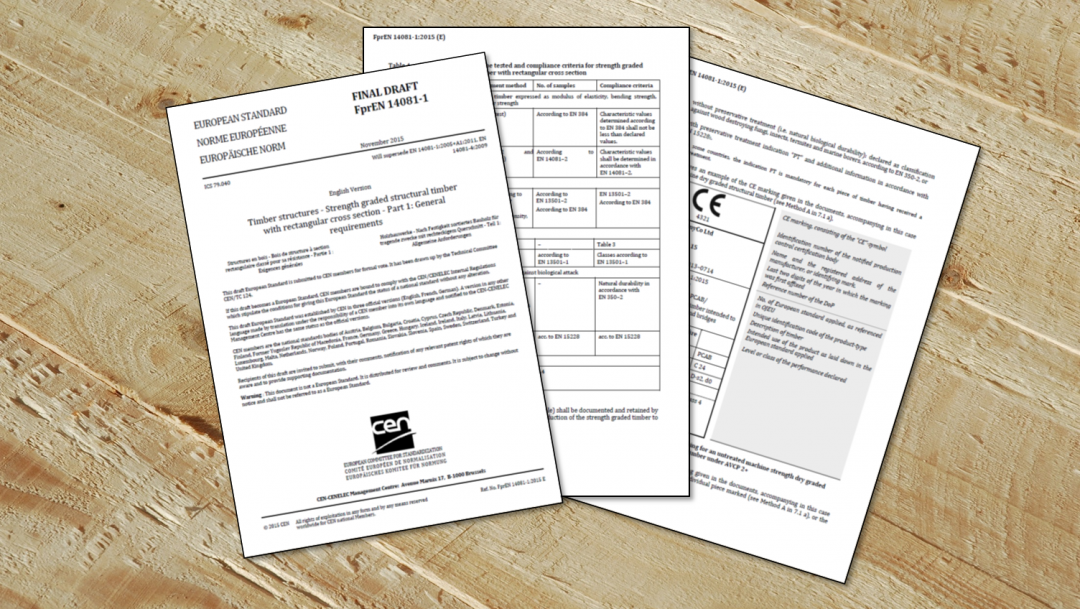
The European Standard EN14081-1 “Timber structures – Strength graded structural timber with rectangular cross section – Part 1 General requirements” is entering the final stages of revision, having been updated to the Construction Products Regulations (CPR) (EU Regulation n°305/2011 amended by delegated regulation n°574/2014). It is almost certain to pass the vote (being made today), having only previously been blocked on the issue of what can be used to mark the timber dry-graded.
Previously the revision had tried to simplify trade by specifying that only the symbol, DG, could be used to denote dry-graded timber, but now it will be permitted to use another symbol (e.g. KD) provided that this means that the timber meets the requirements of what dry-graded means, as specified in the Standard, and is clearly stated as such in the documentation accompanying the timber.
This sounds like a statement of the obvious, but it is related to the shift in what is to be correctly understood by the words dry-graded. It is not simply the same as saying it is kiln dried. Dry-graded timber is timber that has been checked for fissures and distortion (bow, spring and twist) in the dry condition (although this could be as high as 20% moisture content). What dry-graded timber does not indicate is moisture condition of the timber when it is received, and this needs to be specified separately in the contractual arrangement. It also does not relate (directly) to use classes in EN1995. If timber is not dry-graded, but is dry when used in the building, then it will need first to be checked for fissures and distortion.
Perhaps the biggest change for users is that it will become possible for visually graded timber to be placed on the market with no mark on the timber, as the Standard gives two options:
a) Method A – Individual piece marking: Each piece of graded structural timber shall be clearly and indelibly marked (with what is commonly called the grade stamp in the UK)
b) Method B – package marking: Each package of graded structural timber shall be clearly and indelibly marked with a label attached to the package
(All machine graded timber will still need to be piece marked)
The UK’s mirror committee (BSI B/518) disagrees with package marking. Although the CPR places obligation to ensure that any consignment of strength-graded structural timber is accompanied by the required documentation, there is still a greater possibility of timber being misidentified when it is not individually grade stamped. For this reason the UK National Annex to EN 1995-1-1 applies an increased partial safety factor for timber which is package marked (a factor that significantly reduces the design strength of the timber). The only case in which it would not be required to apply this increased partial safety factor is when the visually strength-graded structural timber is requested to be supplied without grade stamps solely for aesthetic reasons, and only then where it is requested by a single customer in respect of a single project.
A mark of PT on the timber will be required, in some countries, when the timber is preservative treated. We managed to avoid this being a blanket requirement throughout Europe because it is not required in the UK, and it would be a problem for producers to mark the timber after it has been packaged for the treatment.
The revision has also involved some changes to Mandate M/112 “Structural timber products and ancillaries”
Update 13/1/2016: the voting passed. There are 10 pages of comments (of which we submitted 4). Editorial comments will now be considered by CEN TC124 WG2 after which the revised standard will be ratified and (assuming that the European Commission gives the go ahead) published.

Leave a Reply
You must be logged in to post a comment.